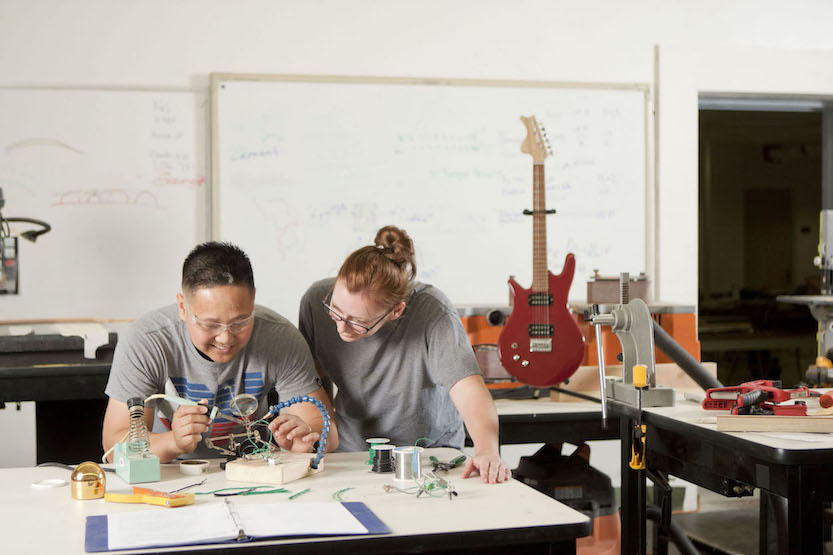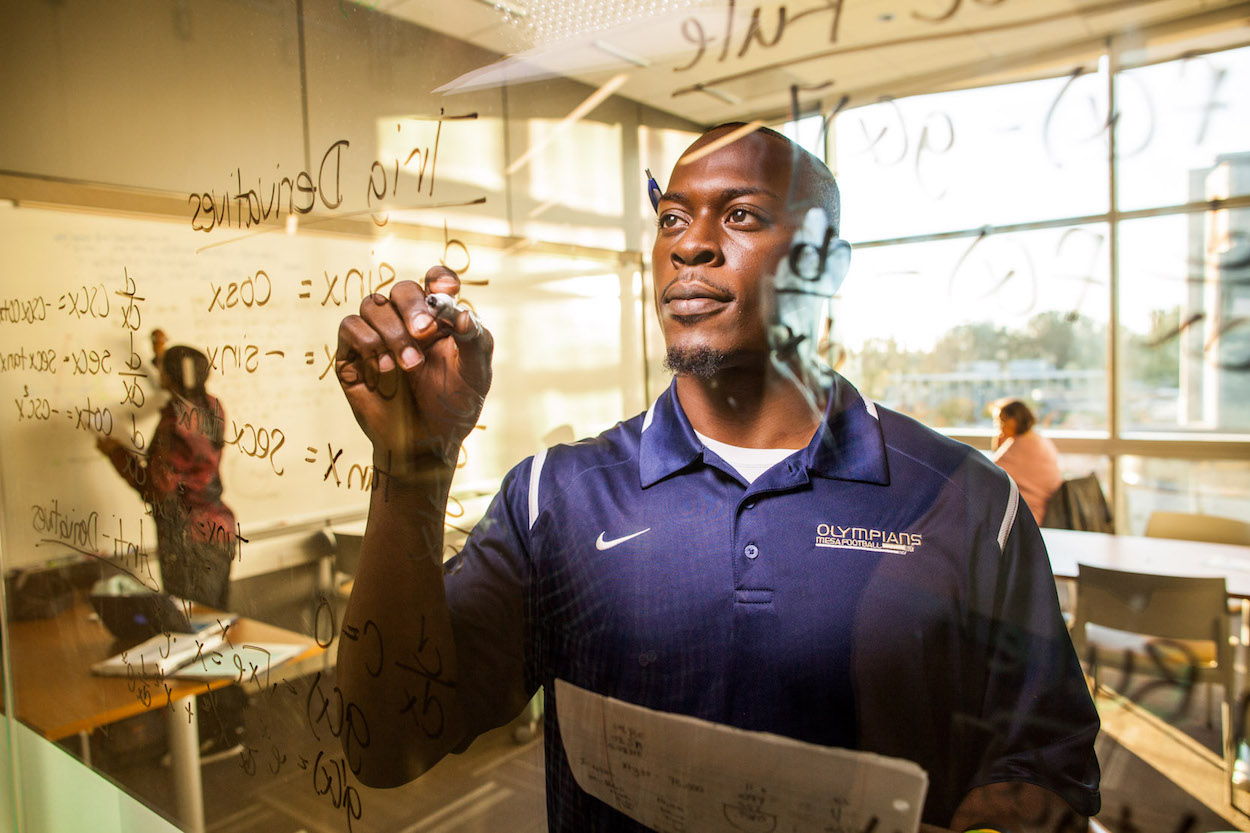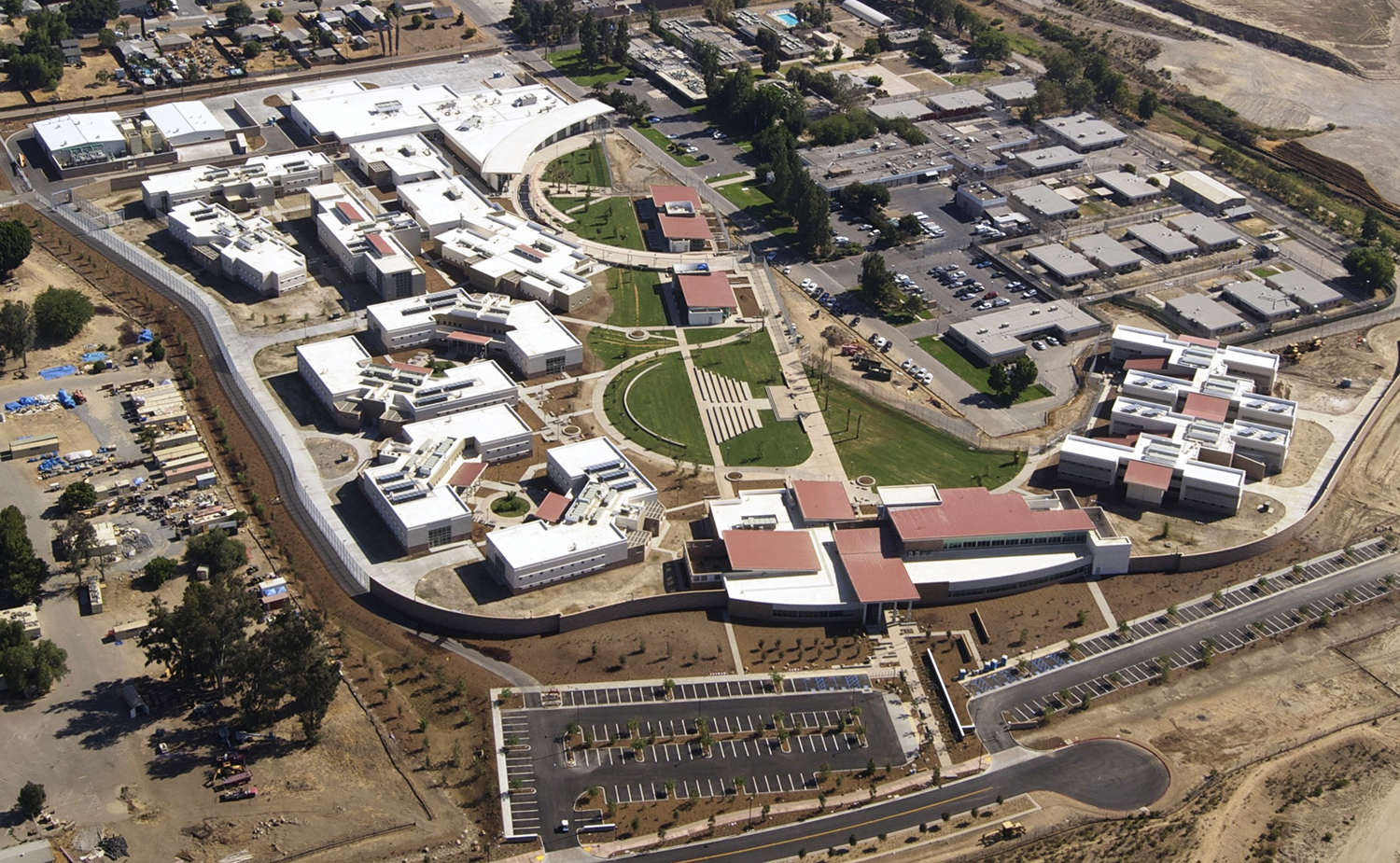Daily Business Report-July 30, 2018
Stephen Adegoke working in a classroom at San Diego Mesa College. (Photo courtesy of San Diego Community College District)
Commentary:
Big changes coming
to vital community colleges
By Dan Walters | CALmatters Columnist
California’s 114 community colleges are the Rodney Dangerfields of higher education, overshadowed by the state’s four-year universities and not getting much respect.
That’s true even though the community colleges’ 2.1 million full-and part-time students are more than three times the combined enrollments of the University of California and the California State University System.
More importantly, low-cost, conveniently located community colleges are the primary gateway into post-high school job training and four-year degrees for those who would otherwise be stuck on the lower rungs of the socioeconomic ladder.
San Diego County is home to five community college districts: San Diego Community College District, Grossmont-Cuyamaca, MiraCosta, Palomar and Southwestern.

Some big changes are coming to the system; some of them from Gov. Jerry Brown, who began his political career a half-century ago as a community college trustee in Los Angeles and will end it this year. Under his prodding, the Legislature has approved a new state-operated online community college that he says will give workers displaced by technology or other circumstances new opportunities to acquire marketable skills.
“I want people to be able to open their own imaginations whether they are 15 or 50. Now (students) have a real opportunity to not only learn but to get a certificate and get skills to earn more money, advance and pursue their dreams,” Brown told the state community college board after signing legislation for the online college.
Brown and the Legislature are also overhauling how the colleges are financed, giving them more state aid but conditioning some money on how well colleges are preparing students for jobs or transfer to four-year institutions. It’s meant to be a carrot to encourage better performances by local colleges, who previously had been given allocations based on enrollment, but it’s also something of an anomaly.
The governor has stoutly resisted performance measures for K-12 schools, even for his program of directing more state aid to help poor and “English-learner” students raise their academic skills. He calls that reluctance “subsidiarity,” meaning trusting local education officials to do the right thing, and has rejected pleas of education reformers for more accountability. It’s a little odd that he would reject such accountability for K-12 schools but insist on it for community colleges.

Still another Brown-backed change is called “California College Promise.” Participating community colleges may provide financial incentives and guaranteed transfers to four-year colleges for community college students meeting certain criteria. The program also envisions community colleges partnering with K-12 schools to improve college preparation.
Brown, however, is not the only source of change for the community colleges. This month, the state community college board approved an agreement that allows students who have completed required lower-division work in some majors to transfer as juniors to private, nonprofit colleges and universities. While students have sought such transfers in the past, the new agreement provides a more direct pathway for admission.
But perhaps the biggest change coming, albeit slowly, to the state’s community colleges is allowing some of them to offer four-year “baccalaureate” degrees in some fields. Nine community colleges awarded 135 such degrees this year under a pilot program, involving such fields as dental hygiene, mortuary science and ranch management.
The state Senate has passed a billto extend the pilot program, but it faces stiff opposition from faculty unions and the Assembly has killed extension legislation in the past.
California has a looming shortage of college-educated workers and if the gap is to be closed, community colleges must be full partners and not merely academic stepchildren.
CALmatters is a public interest journalism venture committed to explaining how California’s state Capitol works and why it matters. For more stories by Dan Walters, go to calmatters.org/commentary
____________________

San Diego climbs to No. 16 on CBRE’s
annual ‘Scoring Tech Talent’ report
San Diego moved up three spots to #16 on CBRE’s Tech Talent Scorecard, part of its sixth-annual Scoring Tech Talent Report, which ranks 50 U.S. and Canadian markets according to their ability to attract and grow tech talent. San Diego’s tech labor force grew 20.4 percent over the past five years adding 11,870 tech jobs.
Tech labor concentration – or the percentage of total employment –- is an influential factor in how “tech-centric” the market is and its growth potential. San Diego has a tech talent labor pool of 70,100 or 4.9 percent of its total employment, compared to the national average of 3.5 percent.
The top five markets for tech talent in 2018 were the San Francisco Bay Area, Seattle, Washington, D.C., Toronto (the first time a Canadian market made the top five) and New York, all large markets with a tech labor pool of more than 50,000.
The Tech Talent Scorecard is determined based on 13 unique metrics, including tech talent supply, growth, concentration, cost, completed tech degrees, industry outlook for job growth, and market outlook for both office and apartment rent cost growth.
San Diego is an attractive market for tech talent, particularly due to its competitive wages and affordable living costs compared to top competitive markets such as the San Francisco Bay Area, New York City and Los Angeles.
San Diego stood out in the report in a number of other key areas:
- San Diego is one of the highest-paying markets, taking the eighth spot. Over a five-year span, average tech wages climbed 16.6 percent to $102,994.
- San Diego produced 13,460 tech degrees from 2011-2016.
- San Diego has the 11th highest concentration of software developers and programmers, with 24,850, accounting for 35.4 percent of its tech talent.
- San Diego’s office rents increased 31 percent to $35.07 and its vacancy rate decreased by 3.3 percent points to 11.2 percent from Q1 2013 to Q1 2018.
____________________
National University plans to
acquire Northcentral University
The nonprofit National University System announced that it plans to acquire the for-profit Northcentral University, which specializes in online education in graduate and doctoral-level programs.
Officials within the private system, which oversees National University, John F. Kennedy University and City University of Seattle, did not disclose the purchase price, and the acquisition is subject to regulatory and accreditor approval.
“This is very mission-driven for us when we think about affordable, accessible, quality education to the masses,” Michael Cunningham, chancellor of the National University System, said in an interview with Inside Higher Ed.
Northcentral serves about 10,000 students and would become the San Diego-based National University System’s fourth affiliate institution. The system has more than 45,000 students globally. Northcentral offers 19 doctoral and 20 master’s degree programs. Cunningham said acquiring Northcentral would help the system meet the needs of working adults seeking graduate degrees.
____________________
SANDAG awards $5.6 million in grants
for protection of native wildlife and plants
The SANDAG Board of Directors awarded $5.6 million to jurisdictions and organizations throughout San Diego County to fund projects that protect native wildlife and plant species through the TransNet Environmental Mitigation Grant Program (EMP) Land Management Grant Program, and that provide increased options for active transportation and access to transit through the TransNet Active Transportation Grant Program.
As part of their grant applications, the recipients have committed nearly $3 million in matching funds to complete the projects, resulting in more than $8 million in combined regional investments.
The TransNet EMP Land Management Grant Program funds will allow San Diego County, local organizations, and cities to preserve and enhance habitats for native wildlife and plants in San Diego. The western burrowing owl, a species of conservation concern due to habitat loss and fragmentation, and the San Diego Thornmint, a rare, native plant protected under the California Endangered Species At, are two of the native species that will benefit from these environmental projects.The efforts also will remove invasive, non-native plants in the region, which aids in the prevention of wildfires and floods and allows native plants to grow and thrive.
____________________
Stone Brewing completes 3 new
locations on 3 continents in 3 months
Stone Brewing, the eighth largest brewery in the U.S., announced last week that it had opened three craft beer destinations on three continents over three consecutive months. It announced the opening of Stone Brewing Tap Room —Shanghai, preceded by Stone Brewing–Napa and the Berlin city center Stone Brewing Tap Room–Prenzlauer Berg.
The opening of Stone Brewing Tap Room —Shanghai marked the first tap room by an independent American craft brewery in China.
“Stone Brewing Tap Room —Shanghai is everything we set out to achieve, as it has the craft beer heart and soul we intended,” said Stone Brewing Executive Chairman & co-founder Greg Koch. “We’ve curated a selection of craft beers rivaled by none and designed an impeccable experience for enjoying them.”


